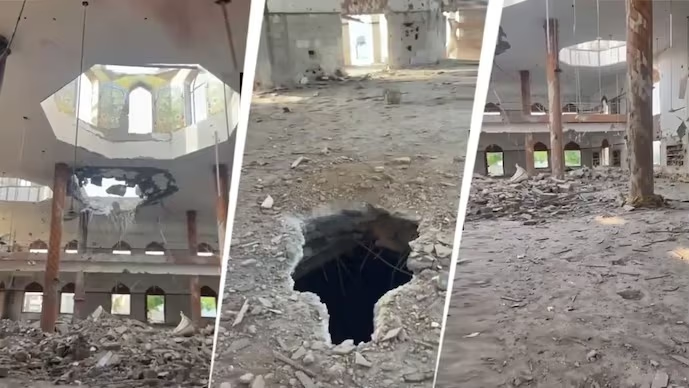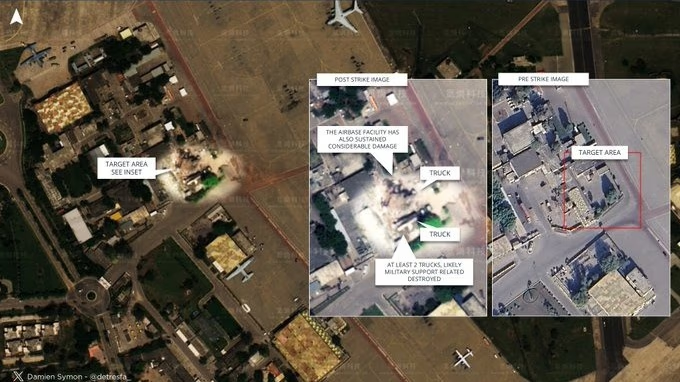After days of tension between India and Pakistan, a ceasefire is currently in place. Prior to this, India decisively dismantled major terrorist hubs in Pakistan. The Indian military reported that 100 terrorists were killed in strikes against nine terrorist locations within Pakistan. Between May 7 and 10, forty Pakistani soldiers were neutralized on the LoC. These events were captured in numerous photos and videos, revealing the truth of Asim Munir's army.
The Indian government released the names of Pakistani officials who attended the funeral of terrorists eliminated under Operation Sindoor. During an official press briefing, Foreign Secretary Vikram Misri displayed a revealing photograph.
With the photograph in hand, Vikram Misri challenged Pakistan's claims that those killed were only innocent civilians, asking what the image of Pakistani military and government officials at a terrorist's funeral actually portrays.
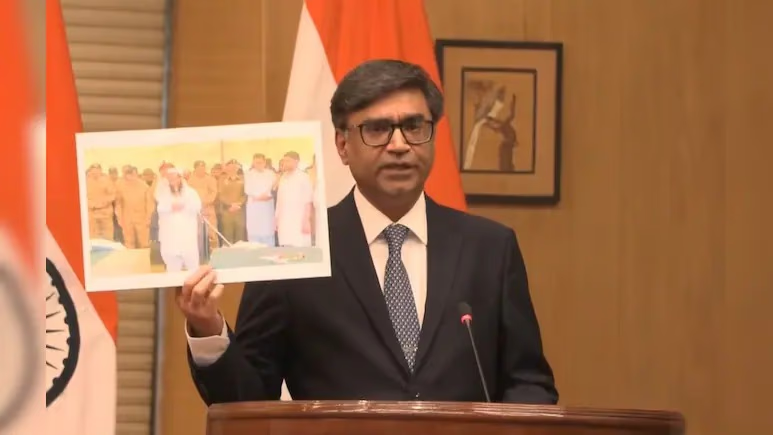
Source: aajtak
In the image, significant figures such as Lahore's IV Corps Commander Lieutenant General Fayyaz Hussain Shah, 11th Infantry Division's Major General Rao Imran Sartaz, Brigadier Mohammed Furqan Shabbir, Punjab province's Inspector General Dr. Usman Anwar, and MP Shoaib Ahmed from Punjab can be seen.
On May 7, India targeted nine terrorist hideouts in Pakistan and PoK, which included strategic locations like Muridke, Kotli, Mahmood Joye, Savai Nala, Sarjal, Bhimber, Kotli Gulpur, and Bahawalpur. Among these, four were in Pakistan, while five were in PoK. Muridke was a Lashkar stronghold, and Jaish-e-Mohammed's base lay in Bahawalpur.
During a press briefing, Indian Army Colonel Sophia Qureshi exposed Pakistan's fake news narrative. She stated that while Pakistan claimed to have inflicted damage on Indian military bases, none were harmed on the Indian side. In contrast, India managed to demolish four of their airbases.
Under Operation Sindoor, India targeted terrorist sites across Pakistan and PoK, reducing the terror strongholds to rubble. The airstrike destroyed Jaish-e-Mohammed recruiting and training stations completely—a devastation verified by satellite images.
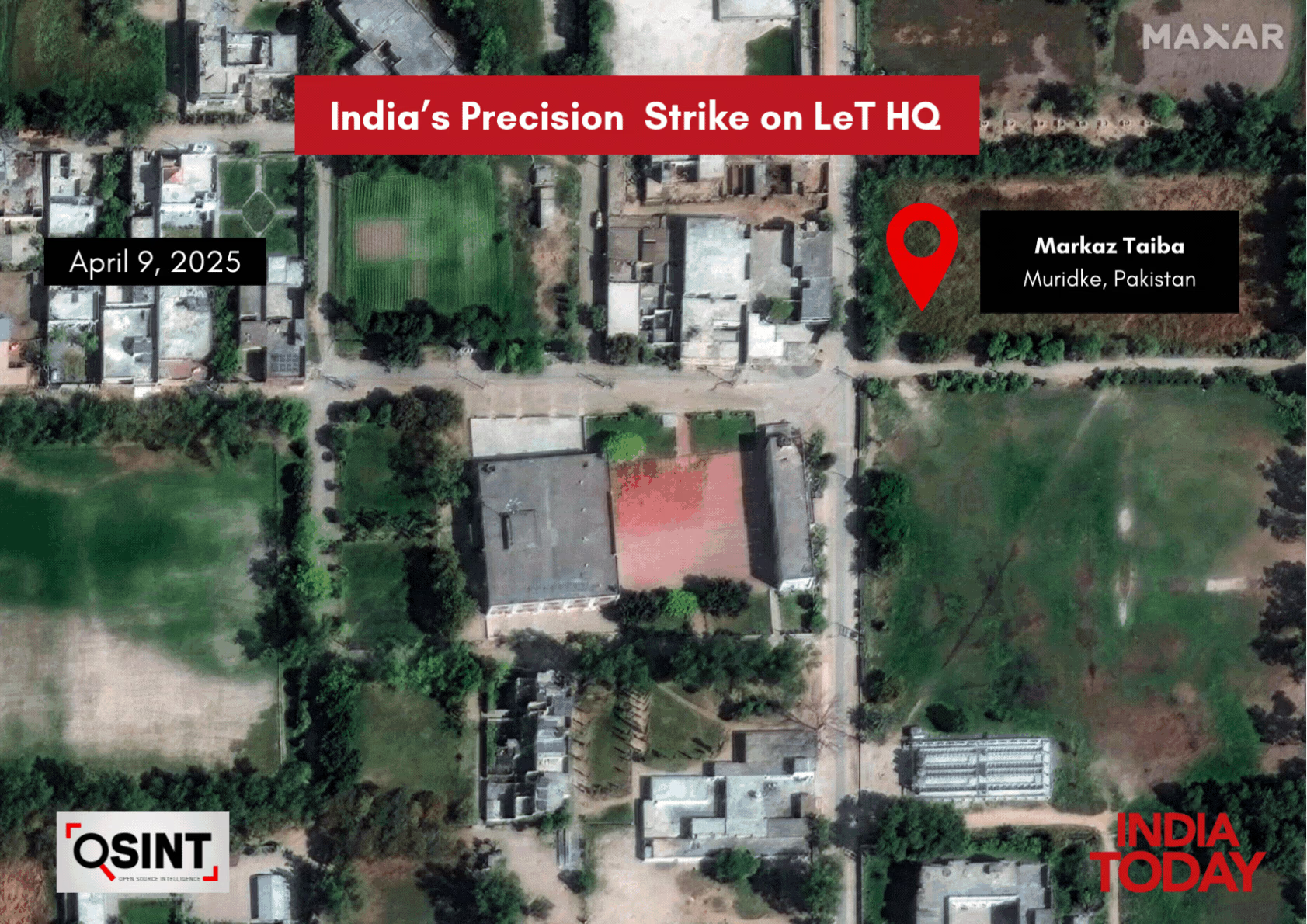
Source: aajtak
Satellite imagery demonstrates India's precision in targeting these extremist bases. One such image vividly depicts the destruction of Jaish-e-Mohammed's main training center in Bahawalpur, showcasing obliterated mosques within its confines.
In a Foreign Ministry briefing, Colonel Sophia Qureshi outlined how India’s Operation Sindoor specifically targeted terrorist sites and military installations, sparing civilian and religious structures—a direct rebuttal to Pakistan’s misleading claims.
Following the ceasefire agreement announcement between India and Pakistan, the Foreign Ministry hosted a conference. They confirmed that at 3:35 PM, Pakistan's DGMO called India's DGMO, agreeing to halt military actions completely from both sides.
Shortly after, the Ministry of Defense held a special briefing. Wing Commander Vyomika Singh, Colonel Qureshi, and Commander Nair systematically debunked Pakistan's false claims and strongly presented India’s robust military position globally.
During this briefing, Wing Commander Vyomika Singh denounced the false Pakistani claims about targeting India’s S-400 air defense system and BrahMos missile bases, assuring that all Indian installations remain intact and secure.
In the April 11 DGMO briefing, Lieutenant General Rajiv Ghai reported that over 100 terrorists were eliminated in India's strikes on nine terrorist sites in Pakistan and PoK. Evidence during the military operation highlighted the crippling impact on Pakistan’s terror networks.
Air Marshal AK Bharti displayed images of India’s attack on Muridke terror camp, showcasing the damage from Indian missile strikes. Muridke, a Lashkar-e-Taiba stronghold, sits 33 kilometers from Lahore along the Grand Trunk road, housing the group's headquarters known as Markaz-e-Taiba.
Similarly, images of India's strike on Bahawalpur terrorist camp highlighted post-attack devastation. Bahawalpur is a key Jaish-e-Mohammed bastion.
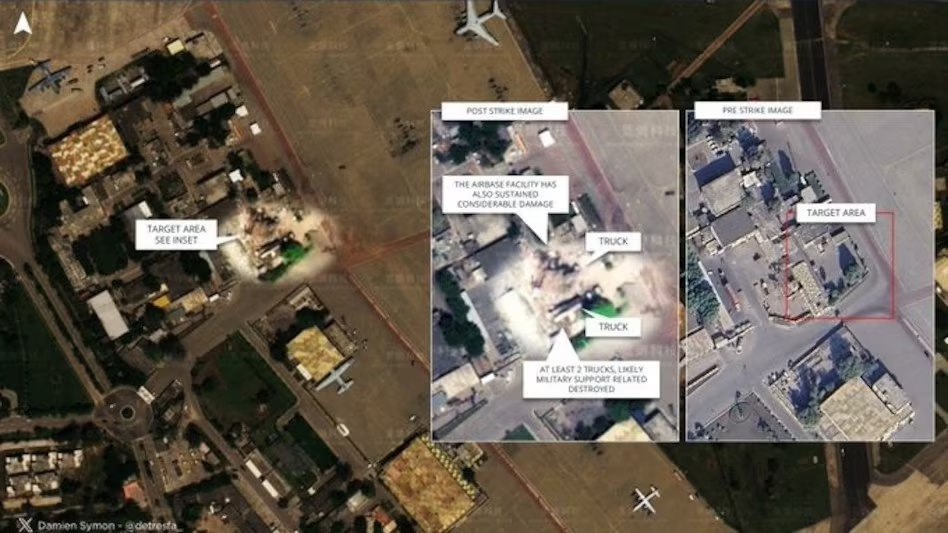
Source: aajtak
Indian military forces executed a precise missile strike on Pakistan's Noor Khan Airbase, previously known as Chaklala Airbase, about 10 kilometers from Islamabad in Rawalpindi, a critical logistic node for the Pakistani Air Force.
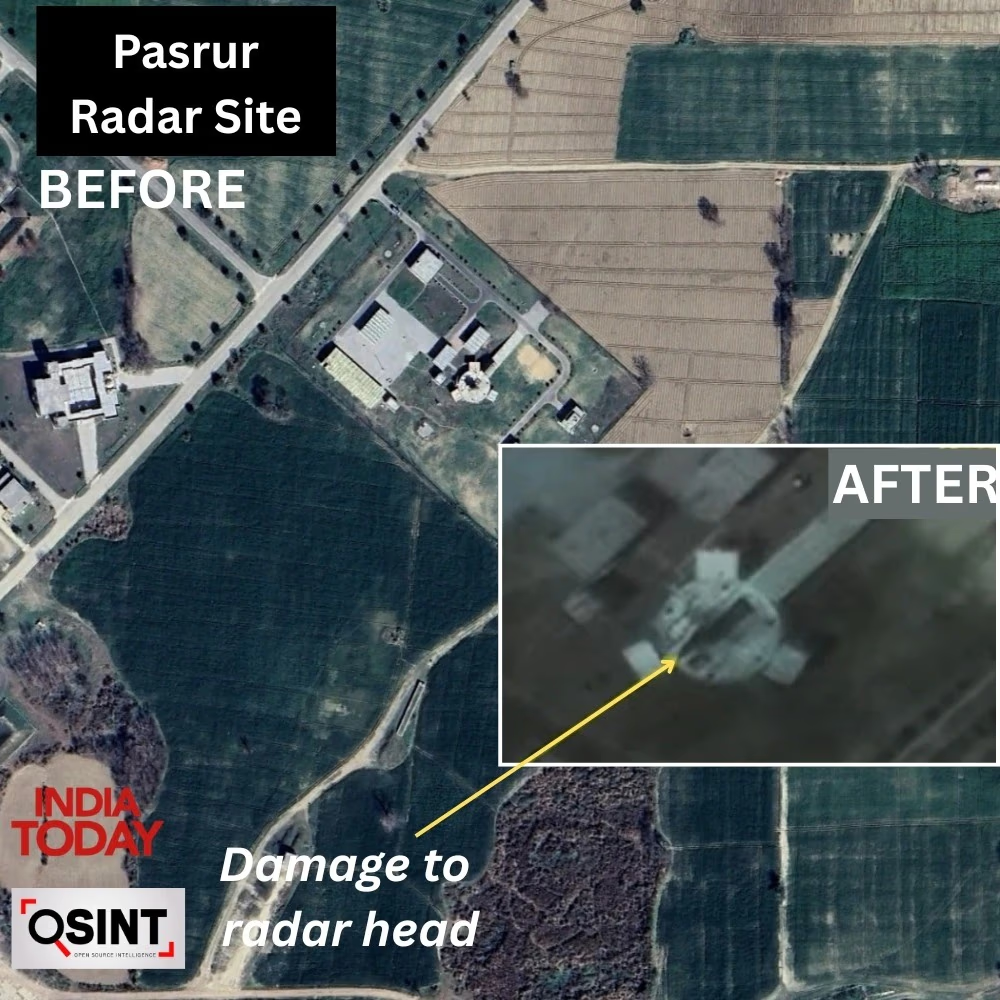
Source: aajtak
The Indian Armed Forces shared before-and-after images of Pakistani air defense radars demolished at Pasrur, Chunian, and Arifwala.
On May 10, under Operation Sindoor, the Indian Air Force conducted precise strikes on at least eight strategic Pakistani military bases, later confirmed by satellite imagery showcasing significant infrastructure damages, including at Raffiki, Muridke, Chaklala, Rahim Yar Khan, Sukkur, Chunian, Pasrur, and Sialkot.
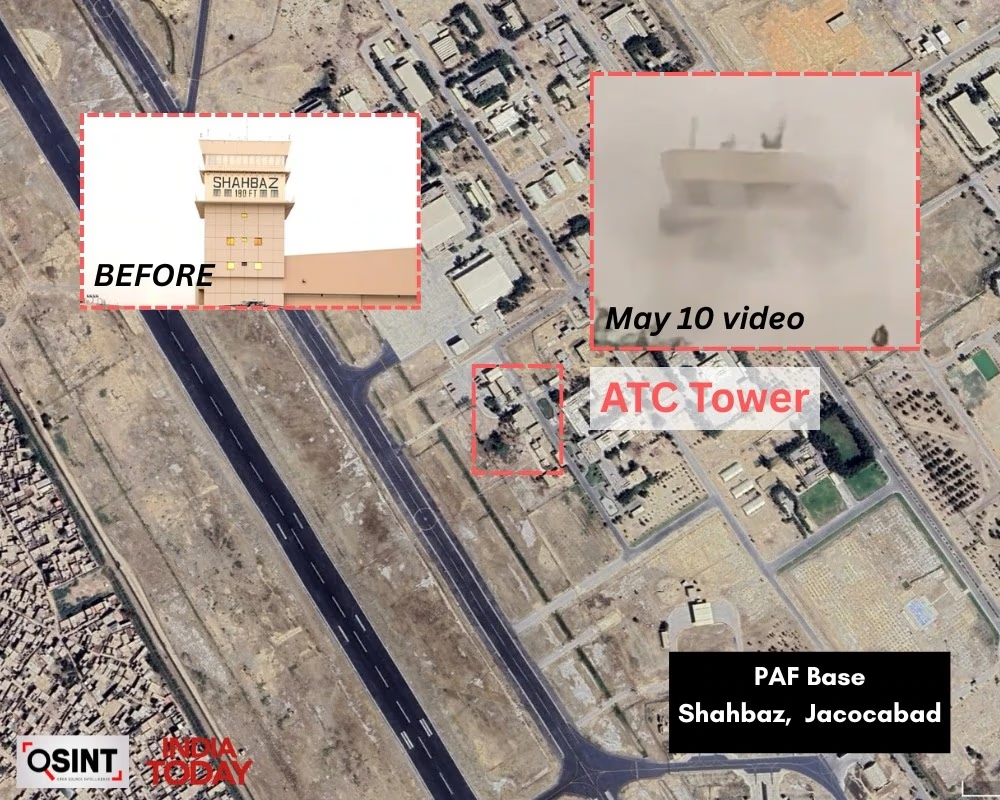
Source: aajtak
Additionally, a strategic strike at the Shahbaz Airbase in Jacobabad damaged the hangar on the main apron, evident from Kawa Space images, revealing significant structural harm—including the air traffic control (ATC) facility.
Furthermore, Sarghoda Airbase witnessed attacks at two sections, with fresh imagery shedding light on debris littered across the middle and intersections of the runway.
